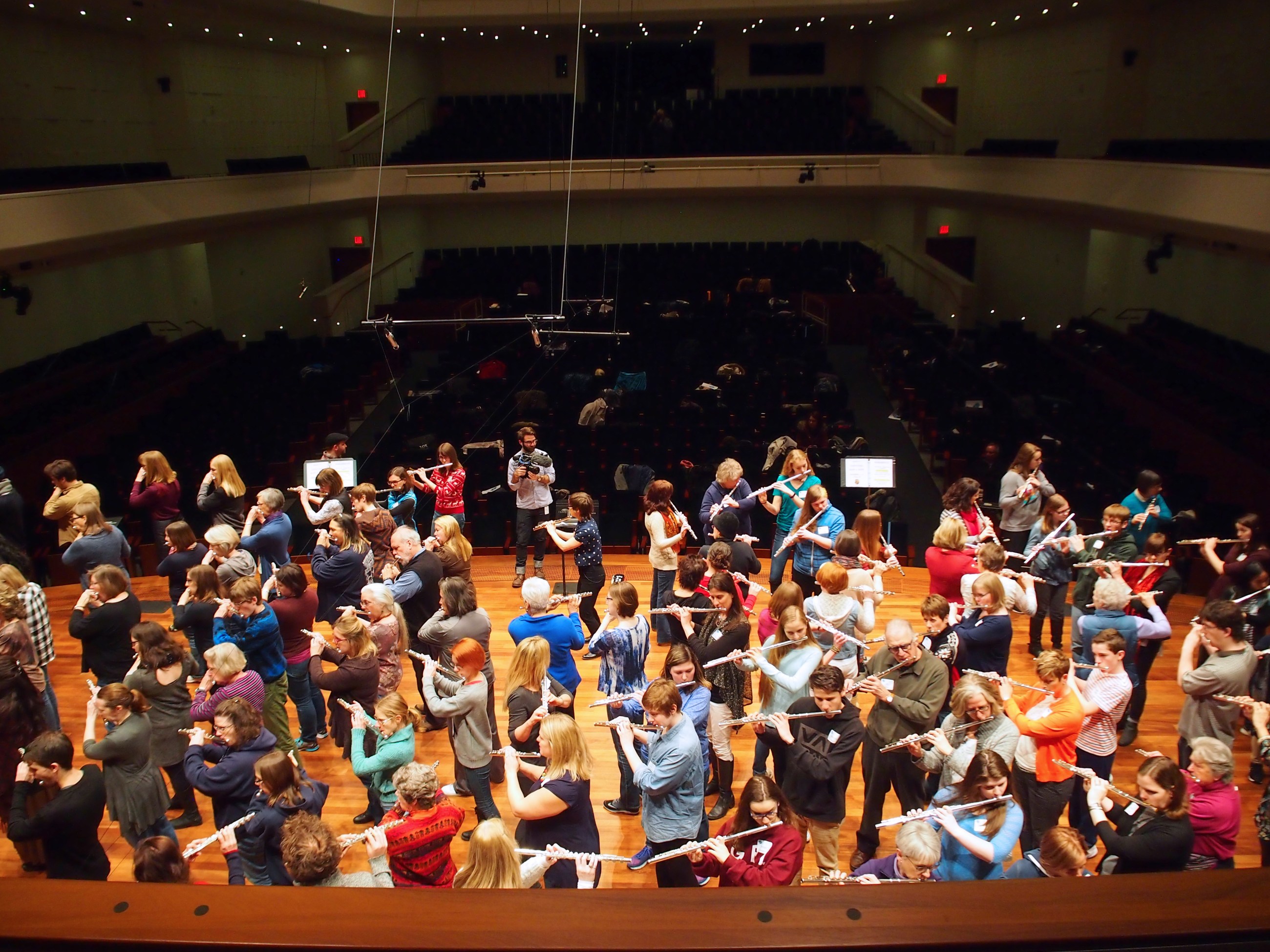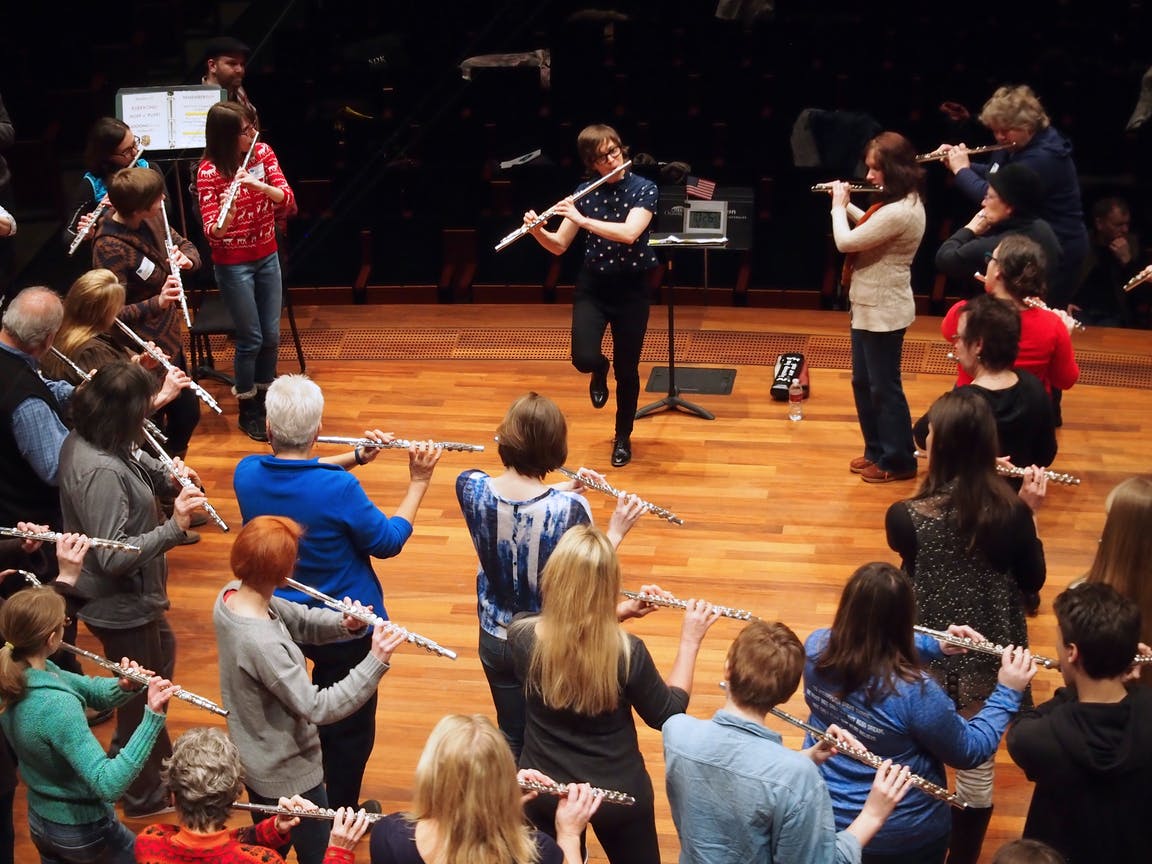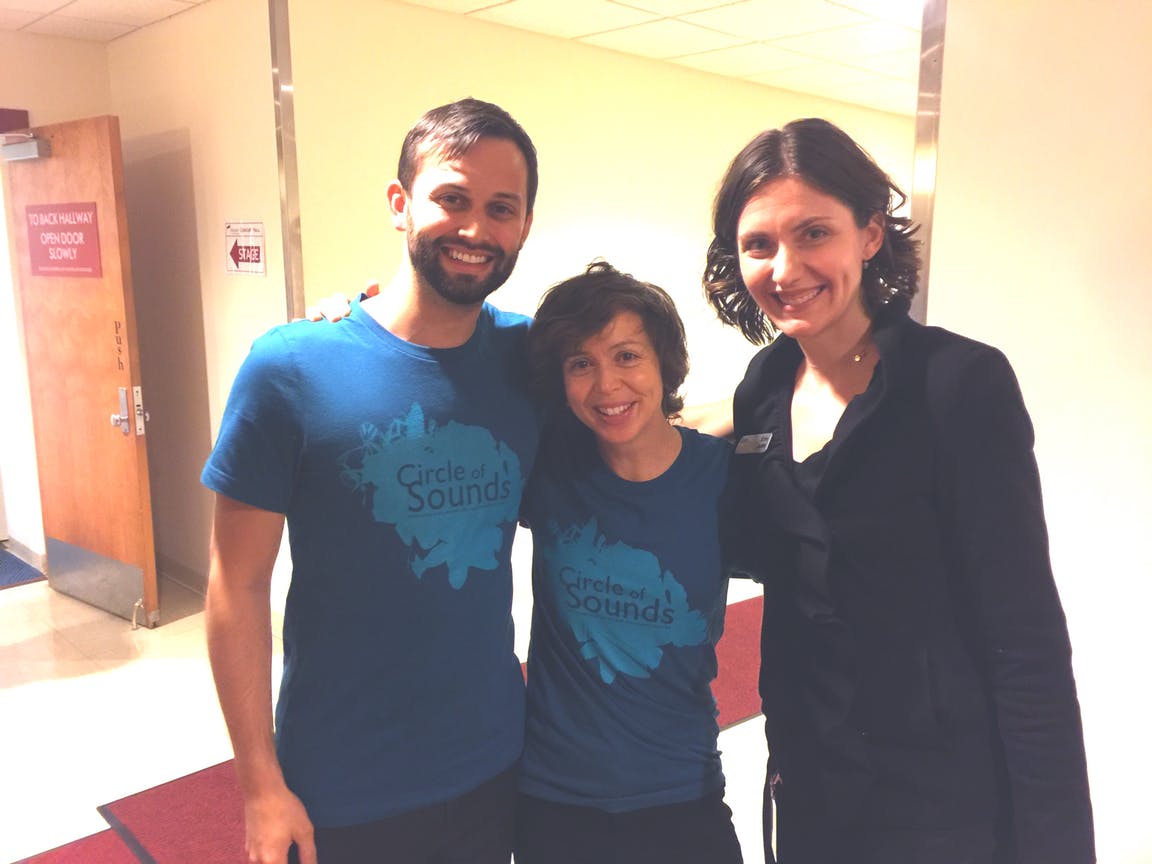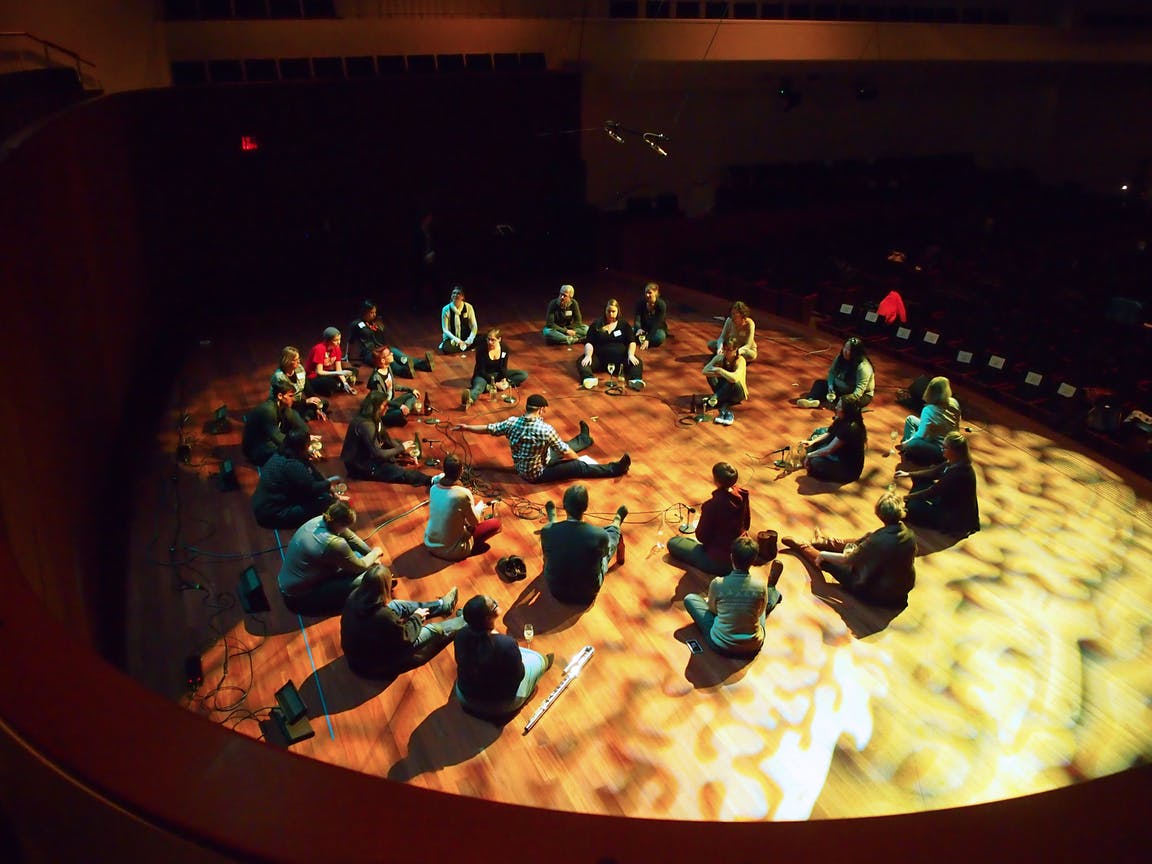
What do 189 flutes sound like?
What do you get when you gather 189 community flutists and have them perform a piece mimicking the migration of birds? Honestly, a pretty cool experience. This past week, I was lucky to join The St. Paul Chamber Orchestra’s presentation of Salvatore Sciarrino’s “Cutting the Circle of Sounds,” a Knight Arts Challenge winner.
The idea was to bring together flute enthusiasts from around the Twin Cities, offer them master classes and workshops led by members of The St. Paul Chamber Orchestra and work with a guest artist to perform a piece. The idea was extremely popular — there was a waiting list to participate.
Actual genius Claire Chase (I’m not just saying that) led us through four rehearsals, preparing for a piece that immersed the audience in a migration of birds as they sang their songs to one another. We made new sounds with our flutes, learned how to listen to others and reflected on the concept of migration and what it means to us as human beings and players.

In order to play the piece, Chase taught us how to make different sounds on the flute, including “Darth Vader scuba diving” (that was the actual notation) and “raindrops,” all while circling the Ordway Concert hall on all three of its tiers. Participants also took part in several workshops about pitch, tackling a new piece, proper posture and other topics that experts and amateurs alike need to know. Most importantly, we all got to know one another as a community of flutists in the Twin Cities. There were participants ranging from 8 to 80 from all backgrounds and skill levels. No matter their experience, everyone was welcome to contribute their sound to the piece.
For me, it was interesting to tie this thought with reflections on my parents, both immigrants to the U.S. and “migrators” themselves. “How do we migrate through life?” Chase asked us. “What migration is happening in our communities, cities, countries?” It was both an artistic experience based on excellent pedagogy and a thought experiment asking the participants to dig a little deeper into their lives and make those thoughts into sounds as we tried to do the same for the audience.
The intimate access provided to us with the guest artist and professionals from the orchestra was particularly unique. I was struck by the orchestra’s intentionality in reducing the distance between the musician on stage and the listener in the audience. There was a real hunger to connect with the three main teachers, one a MacArthur Genius and new music pioneer, another a student of French flutist Marcel Moyse and titan in her own right, and third a Manhattan School superstar who was the first Suzuki flute student to graduate in the U.S.

On the night of the performance, we all gathered backstage and happily chatted with one another as we prepared. Chase came in and gave us a pre-show pep talk, speaking mostly about enjoying the piece and the process of making music rather than fretting over mistakes. During the first half, we sat in the second tier and watched Chase open with Johann Sebastian Bach’s Toccata and Fugue in D minor, BWV 565. What an incredible statement to start a new music concert as if to say, “Don’t forget, every advance in music is built on the musical heritage we all learn from.”
She rocked the piece, using harmonics and advanced tonguing techniques to make it seem like we were not just listening to one flute, but an entire organ filling the hall with its beautiful melody and virtuosity. In the next piece, she played six different instruments, taking us through the life story of Pan, the god of wilderness and music, ending with the largest flute I’ve ever seen which she affectional named, “Big Bertha.”
Finally, we were on. Now we had an audience to react to, engage with our strange sounds and tell our story of migration. As the piece came to an end and the last “raindrop” fell, the hall went dark and the audience enjoyed a moment of silence, appreciating the journey they had just taken. Once the applause was finished and almost 200 people took a bow, it was over. The flock of flutists went back stage, said their goodbyes, had cake and migrated home back to their lives with an unforgettable memory.

When I spoke to Chase after and noted to her how thankful I was to play with her and to express my observation about starting with Bach, to my surprise, she said, “He is my favorite new music composer!” Of course! We often that forget Bach’s 1,000-plus compositions, his experiments in counterpoint and modulation and his raw talent would have been the equivalent of Chase’s new commissions and innovations today.
I want to personally thank Chase for her amazing talent and charisma and congratulate The St. Paul Chamber Orchestra on a successful performance. Peeling back the veil and showing our communities just how stupendous these individuals and ensembles are is to everyone’s advantage. The more our audiences know about these players, the more they will feel connected to them, to their music, their careers. Audiences will have more reason to come to the hall beyond an affinity for the program. They will want to see their favorite musician perform and cheer for their home orchestra, like they cheer for their favorite sports team.
I feel inspired to keep trying to find opportunities to play, maybe adventuring out beyond my usual “Flute Music of the Baroque” book I have enjoyed playing repeatedly for the last 15 years and finding out where my flute community is here in Miami.
Do you play the flute? Would anyone like to start a chamber group with me? I’m thinking the Mendelssohn Quartets scored for a flute, clarinet and two marimbas. Why not? Find me on Twitter at @klecorgne.
Kris LeCorgne is the arts associate at Knight Foundation who has played the flute for 15 years.

-
Arts / Press Release
Recent Content
-
Artsarticle ·
-
Artsarticle ·
-
Artsarticle ·

